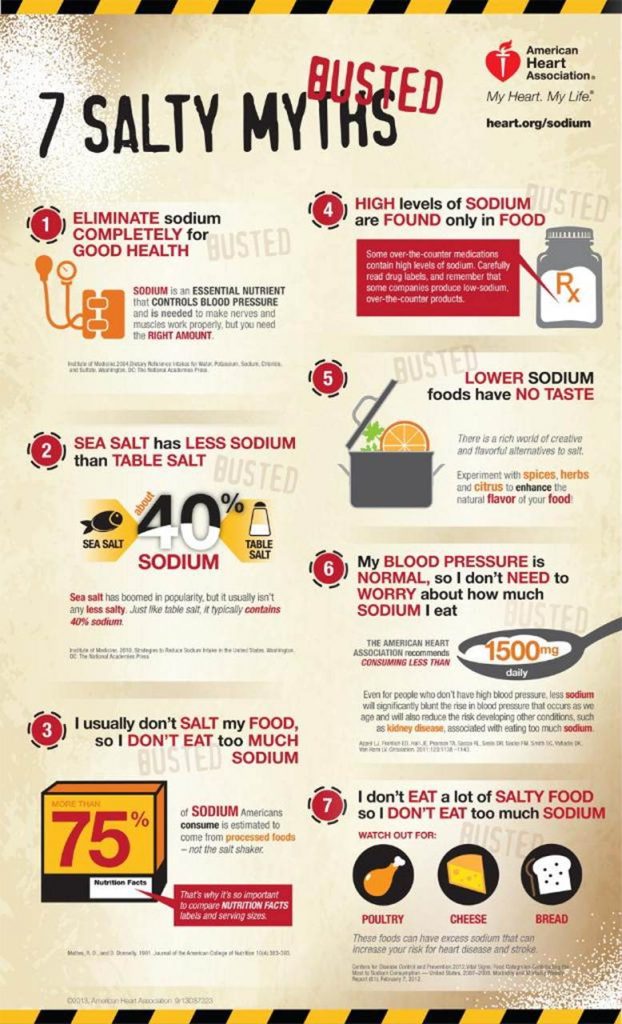Seven Salty Myths Busted
May 23, 2016
by Mankato Clinic
1.Eliminate sodium completely for good health.
Sodium is an essential nutrient that controls blood pressure and is needed to make nerves and muscles work properly, but you need the right amount.
2. Sea salt has less sodium than table salt.
Sea salt has boomed in popularity, but it usually isn’t any less salty. Just like table salt, it typically contains about 40% sodium.
3. I usually don’t salt my food, so I don’t eat too much sodium.
More than 75% of sodiu, Americans consume is estimated to come from processed foods – not the salt shaker. That’s why it is so important to compare Nutrition Facts labels and serving sizes.
4. High levels of sodium are found only in food.
Some over-the-counter medications contain high levels of sodium. Carefully read drug labels, and remember that some companies produce low-sodium, over-the-counter products.
5. Lower sodium foods have no taste.
There is a rich world of creative and flavorful alternatives to salt.
Experiment with spices, herbs, and citrus to enhance the natural flavor of food.
6. My blood pressure is normal, so I don’t need to worry about how much sodium I eat.
The American Heart Association recommends consuming less than 1500 mg daily.
Even for people who don’t have high blood pressure, less sodium will significantly blunt the rise in blood pressure that occurs as we age and will also reduce the risk developing other conditions, such as kidney disease, associated with eating too much sodium.
7. I don’t eat a lot of salty food so I don’t eat too much sodium.
Watch out for: Poultry, Cheese, Breads, etc.
These foods can have excess sodium that can increase your risk for heart disease and stroke.
